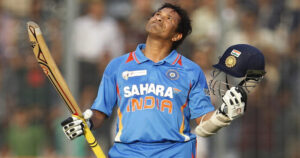BJP-RSS Deadlock Over New Party Chief Continues, State Leadership in Limbo

The Bharatiya Janata Party (BJP), known for its tight organizational structure and alignment with the Rashtriya Swayamsevak Sangh (RSS), is currently facing a rare internal stalemate. The ongoing deadlock between the BJP and its ideological parent RSS over the appointment of the new party president has triggered confusion and uncertainty within the party’s state units, many of which are awaiting direction and clarity on future strategies.
This situation is particularly unusual for a party that prides itself on swift decision-making and a disciplined hierarchy. The delay in naming a successor has left several state units in organizational limbo, raising concerns over coordination, policy execution, and upcoming electoral preparedness.
Leadership Void Raises Strategic Concerns
The BJP national presidency is a powerful post that shapes the party’s national narrative, election strategies, and cadre engagement. With the general elections behind and several key state elections on the horizon, the absence of a central guiding figure has begun to reflect at the grassroots level. State presidents, many of whom were expecting a shake-up post the Lok Sabha elections, are unsure of their future.
The situation is more sensitive in politically volatile or electorally significant states like Maharashtra, Uttar Pradesh, Bihar, and Karnataka, where leadership decisions could dramatically impact the party’s electoral prospects.
The RSS Factor
At the heart of the delay is the difference in opinion between top BJP leaders and the RSS leadership. While both organizations share a long-standing ideological relationship, they do not always see eye to eye when it comes to individual leadership choices.
Reports suggest that the RSS is pushing for a more organizationally experienced and ideologically rooted leader, someone with a grassroots background and close ties to the Sangh’s traditional value system. On the other hand, the current BJP leadership, especially the upper echelons in Delhi, appear to favor a younger, more dynamic face who aligns with the Modi-Shah model of assertive governance and electoral dominance.
This tug-of-war has not only slowed down the decision-making process but also created a vacuum that is beginning to impact the morale of state-level leaders and workers.
Impact on State-Level Functioning
Without clarity from the top, several state units are operating without clear directives. Upcoming state assembly elections in Haryana, Jharkhand, and Maharashtra require immediate attention in terms of strategy, ticket distribution, and alliance-building. However, in the absence of a confirmed national president, key decisions are either delayed or being taken without consensus, increasing the risk of internal discord.
Additionally, state leadership changes, which usually follow the national appointment, are now on hold. This has led to dissatisfaction among certain factions within the party, particularly in states where the performance in the Lok Sabha elections was below expectations.
Organizational Cadre in Wait-and-Watch Mode
The BJP’s strength has traditionally come from its well-oiled cadre machinery and clear chain of command. With the top post hanging in uncertainty, the grassroots network finds itself in a wait-and-watch mode. Many karyakartas (party workers) are awaiting directions regarding campaign strategies, outreach programs, and structural reassignments that are typically guided by the national president.
This lack of clarity is affecting coordination between the central command and state units, with several mid-level leaders unsure whom to report to or take guidance from.
What Lies Ahead?
While the BJP-RSS relationship has withstood many challenges over the decades, this current deadlock over leadership highlights the shifting dynamics within the saffron ecosystem. As the BJP evolves from a cadre-based party to a more personality-driven political powerhouse, its ideological roots are being tested.
Ultimately, a consensus will have to emerge whether through compromise or strategic alignment. But until then, the BJP remains in a state of organizational flux, and its state units continue to operate in a vacuum, awaiting the leadership that will shape the party’s next phase.
With several key elections on the horizon, timely resolution of this leadership crisis is crucial not just for the BJP’s internal structure, but for its electoral future as well.




